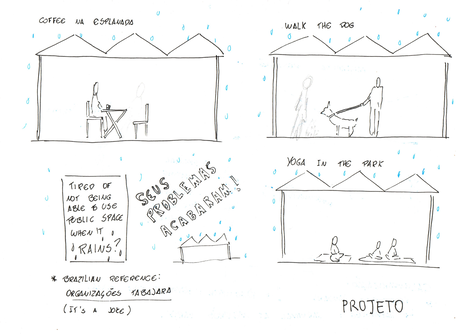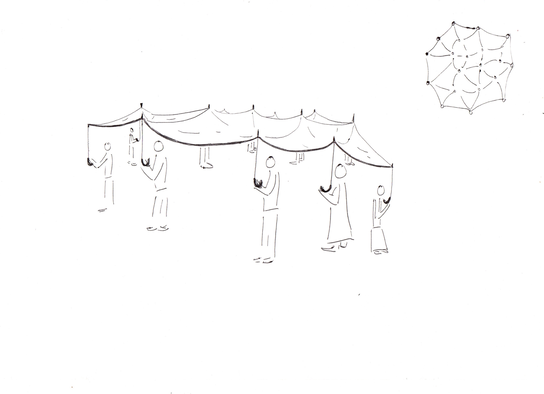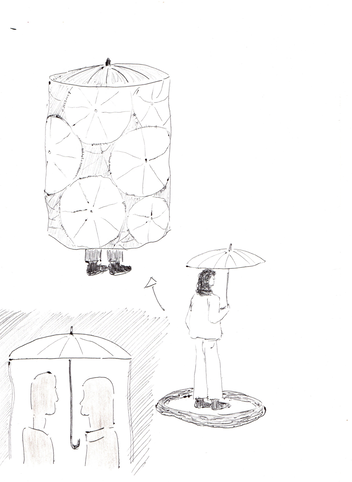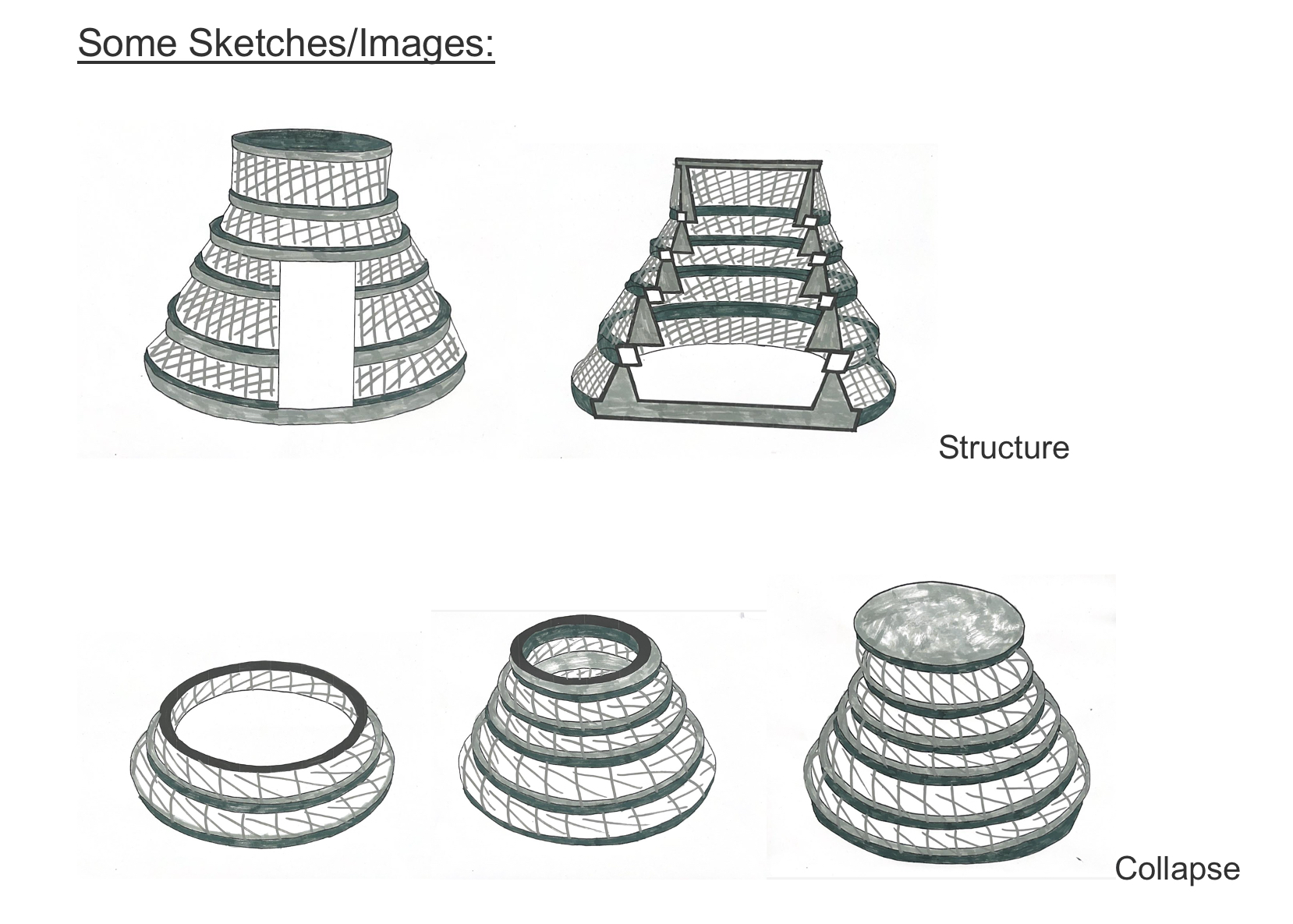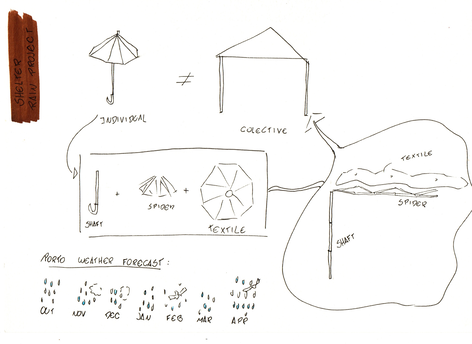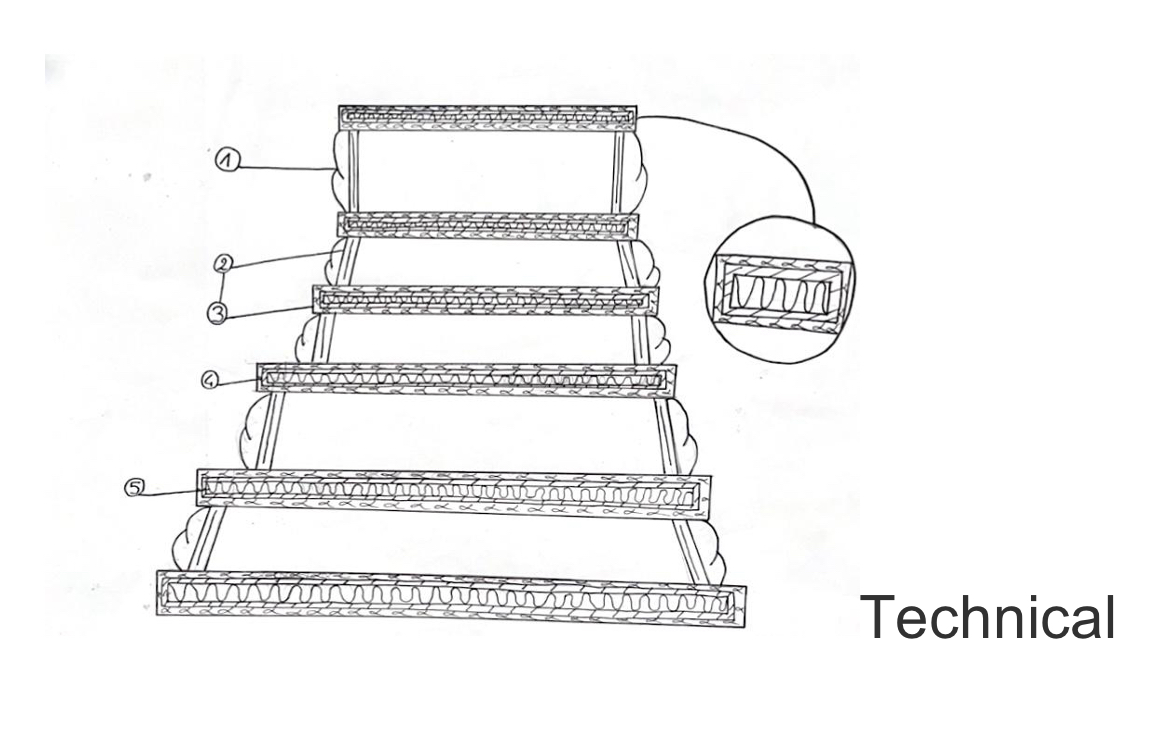Castiglione Maëlla - Shell-Ter Project
Sinopse :
Shell-Ter is a microarchitecture project inspired by the shape of seashells. The idea stems from the current housing crisis in Europe. What if we all became homeless? Dystopian thinking here is a space of refuge for human psychology, finding in dystopia a libertarian alternative by thinking in terms of nomadism.
Our spaces are beginning to shrink due to exponential population growth. You don't have to go far to understand the nomadic lifestyle: natural species such as molluscs, snails and turtles move from place to place with their homes on their backs. The natural form of the shell is a positive thought for human beings, as it brings back fond memories of holidays and good times and can become a shelter from the violence of the world. Thinking of a nomadic micro-architecture in the shape of a shell would soften the landscape, but it is also a technically favourable form for comfort (insulation and acoustics).
The idea behind Shell-Ter was therefore to propose a retractable microarchitecture inspired by the shape of a shell, which made it easier to retract the structure ergonomically. In other words, a collapsible microarchitecture that can be moved at will. And it's part of an alternative way of thinking about housing.
The structure is also designed to be environmentally friendly, with the materials used complying with European standards for the treatment of wood and nature. Drawing inspiration from nature in the use of materials provides eco-responsible thinking, visual comfort, mental comfort and the ability to blend into the landscape.
The results expected to present this project would be plans, sketches, operating diagrams, summary images and landscape insertions. A functional mock-up could be envisaged and would be useful, but it would require more time and resources, as this is a case of working on visual communication in a different way. This presentation strategy is also in line with dystopian thinking and the growing lack of resources in our crisis-ridden environment.
A poster of the project phase would then be presented, bringing together the visual communication elements required to understand the project.
The importance of this project is to show that it is possible to think differently, through literary and philosophical reflection on the way we live, in order to generate new objects with a strong environmental and societal sensibility.
Umbrella Project (Clara Sefair, David Gamel)
The initial intentions guided the decision to deconstruct into three basic elements, two metal pieces, ‘the shaft’ and ‘the spider’, and the textile. The process of deconstruct each model of umbrellas gave us a different set of small pieces of plastic or metal that are specific for each of them based on the model and the quality.
The average umbrella is a short-lasting product, often cheaply made and not overall resilient to heavy weather conditions. The result is an appalling amount of thrown-away umbrella corpses scattered around the city and – due to it´s volume – among the most prominent littered object in the urban environment. Many times, the damage is minor, just applying to one small component, but severe enough to make the whole system unusable and therefore dispensable. With often more than 85percent of the umbrella structure still being intact, they provide for an excellent (and free) building material which triggered our interest in modifying them into a new shape and – potentially – also giving them a new function. One of the early drafts is a “collective umbrella” to eliminate the distancing factor and create a feeling of union. The very stability of the structure depends on the participation of multiple carriers in order to hold it upright.
The challenge is figuring out how to reassemble the elements to create a bigger shelter for collective activation. We decided to work with the circular textile element as it is, just putting together a lot of pieces to construct a bigger textile, sort of an oversized poncho. The idea is to keep the circular shape because it automatically gives us the idea of the previous object, which we understand interesting to keep.
The umbrella textiles when sewn together offer activation opportunities: A place to hide - a cover - a semi-permeable skin – a kinetic volume, moved by the actors. The holes between the sewn pieces create a possibility to break the abstractness and give view to the “driving force”, the bodies underneath. A communal choreography with the umbrella-cloth being stage, reqistite AND costume at the same time. The flexibility of the structure allows for various “landscapes”: from a tightly packed squad to a spread out surface - from a motionless matter lying on the floor to a wild wave that can move around the space.
The situation point for the project at this moment is related to study different forms of activation for a group of persons, based on the idea of work with the own bodies to be protected with the big shelter: The pluralification of the formerly singular object and the recycling of the given materials.
The involvement of multiple actors is key in this work – it shall not simply become a static sculpture but an activational tool to be played with by a group of the users/performers/shelter-seeking. Think about the possibilities of embodied communication enhanced by the collective use of a large piece of fabric that unites all bodies; possible negotiations between walking quickly or slowly, deciding changes of direction. As a large body with 'decentralized intelligence' capable of testing collective skills to horizontalize decision-making.
Paola d’Andrea
MORAR AS FONTAINHAS
video
https://www.researchcatalogue.net/view/2511572/2511573
Morar as Fontainhas representa o reenactment da minha experiência de vida na minha carrinha camperizada na área de Fontainhas. Cheguei ao Porto em 18 de setembro de 2023 e, através de um aplicativo para campistas, a zona de Fontainhas foi recomendada como um local adequado para estacionar: acesso à água, vista panorâmica, rua fechada sem tráfego ou barulho. Vivi no Passeio das Fontainhas até 23 de setembro, dentro de um furgão com dimensões de 4,60 metros de comprimento, 1,80 metros de largura e 2,20 metros de altura, totalizando 16,56 metros cúbicos de espaço. Estacionando, transformei a rua em minha casa temporária.
Viver na rua é uma sensação semelhante a um desafio: às vezes
interessante, outras vezes frustrante, outras vezes estressante, mas também gratificante. É necessário desenvolver um sexto sentido para o local e as pessoas, permanecendo constantemente vigilantes e adaptando a rotina diária ao que nos rodeia. É importante estacionar perto de uma fonte de água ou abastecer antecipadamente; é possível deixar a porta aberta, mas talvez apenas durante o dia, e lembrar-se de usar o banheiro do bar próximo antes de ir para a cama; a cidade se torna nosso despertador e quando ela acorda, nós também acordamos.
A carrinha se torna uma casa móvel, uma membrana fina que nos
protege do exterior, mas também nos permite um diálogo constante com ele. Ao baixar as cortinas, nos escondemos, mas o mundo exterior permanece muito presente, e nossos sentidos se amplificam na tentativa de prever possíveis perigos e situações. Tornamo-nos mais sensíveis aos estímulos sensoriais: ouvindo
passos à noite, tentamos entender de onde vêm; ao ouvir gritos, tentamos
avaliar a distância deles; quando o camião de limpeza da rua passa de manhã, nos perguntamos se alguém virá bater para nos fazer perguntas; e quando os faróis de um carro iluminam o interior, às vezes temos a sensação de sermos "descobertos". Antes de dormir, verificamos várias vezes se todas as portas e janelas estão fechadas, sentindo-nos constantemente expostos.
Ao filmar, alternava frequentemente entre dois pontos de vista.
Em um deles, a câmera se torna meu olhar através do qual eu explorava e interrogava a área de Fontainhas enquanto realizava minhas atividades diárias, adaptando-me ao local como uma nova habitante. O outro ponto de vista é de dentro do minha carrinha, a membrana que me une e me separa do mundo exterior, outro filtro com o qual posso observá-lo. As janelas permitem enquadrar as diferentes dinâmicas que ocorrem na área de Fontainhas: turistas, trabalhadores, moradores da rua, passantes curiosos. A carrinha possui espelhos com os quais amplio meu olhar, mas também pontos cegos que ele não pode alcançar; a janela se torna um dispositivo visual, o olhar para o mundo exterior. Viver em Fontainhas reflete a possibilidade de redefinir continuamente nossa privacidade
e nosso espaço, oferecendo uma nova maneira de considerar a casa e ser casa para si mesmo. O espaço público se torna um elemento essencial de nossa habitação, tanto como estratégia de sobrevivência quanto como local para ampliar a comunicação e interação humana, pois os 16 metros cúbicos do furgão não são suficientes para satisfazer a necessidade humana de movimento e compartilhamento. A interessante experiência de não estar vinculado a um local específico nos faz sentir efêmeros na paisagem, enfatizando a importância da coisa pública e destacando a fluidez de nossa identidade como "cidadãos" em favor da de "habitantes".
Project: Bedtime Stories experiences and research on the cohesive power of public libraries.
Name: Vita Martí Navarro
Looking at spaces designed for adults, the quest for leisure, forgetfulness and imagination often leads to environments that are predominantly commercialized, reinforcing dichotomies between public and private spheres, nature and culture, and limiting access to the generation of knowledge. Reflecting on this, I found libraries to be public spaces with the most potential to foster culture and host people, especially those who may not easily find hospitality elsewhere.
I aim to advocate for the pivotal role of these spaces in our socio-cultural fabric, envisioning them as dynamic, inclusive, and democratic venues contributing to societal development. Urging libraries to embrace adaptability, the objective is to propose interventions addressing evolving needs and challenges.
Starting with the concept of shelter, I developed a series of metaphoric practices to reflect on the ambiance created before bedtime, aiming to understand its crucial role in our well-being and capacity to grow and transcend through life's challenges. By bringing to light the contrasts present, this experience seeks to reimagine the purpose and design of libraries as spaces providing communal rest and fostering connections, reminding us of the influence our environment has on shaping alternative narratives for ourselves and society.
The experiences developed for “Bedtime Stories” can be found in the following page: https://www.researchcatalogue.net/view/2483570/2483571
With these premises in mind, I suggest delving deeper into the potential of these institutions to respond to emerging challenges and the complexity of societal needs, shifting from conventional 'mono-functional' spaces to more versatile 'multi-functional' structures. I would like to start a debate about how libraries can extend their functions beyond traditional roles and I find crucial to this examination to address broader challenges such as accommodating diverse cultural identities within public spaces, as well as more specific challenges faced by public libraries in serving the homeless community.
This discussion could be materialized through a series of artistic interventions, akin to the experiences developed during the 'bedtime stories' project accompanied by proposals for redesigning these spaces, making changes that could be structural or focused on enhancing services provided by the institution, promoting cultural activities and creating new dynamics inside the space willing to emphasize the necessity for these spaces to exist at intersections where various cultural identities can act, interact, transform, and be transformed.
+ do que CASAS (projetos)
1. SHELL-TER - Maëlla Castiglione
2. Permeavel - Clara Sefair, David Gamel
3. Bedtime Stories experiences - Vitta Martí Navarro
4. MORAR AS FONTAINHAS - Paola d’Andrea
5. Manto de Cascas de Árvores e Camuflagem- Ana Sousa Santos
6. (Falta nome) - Pedro Bittencourt e Clara Sefair
